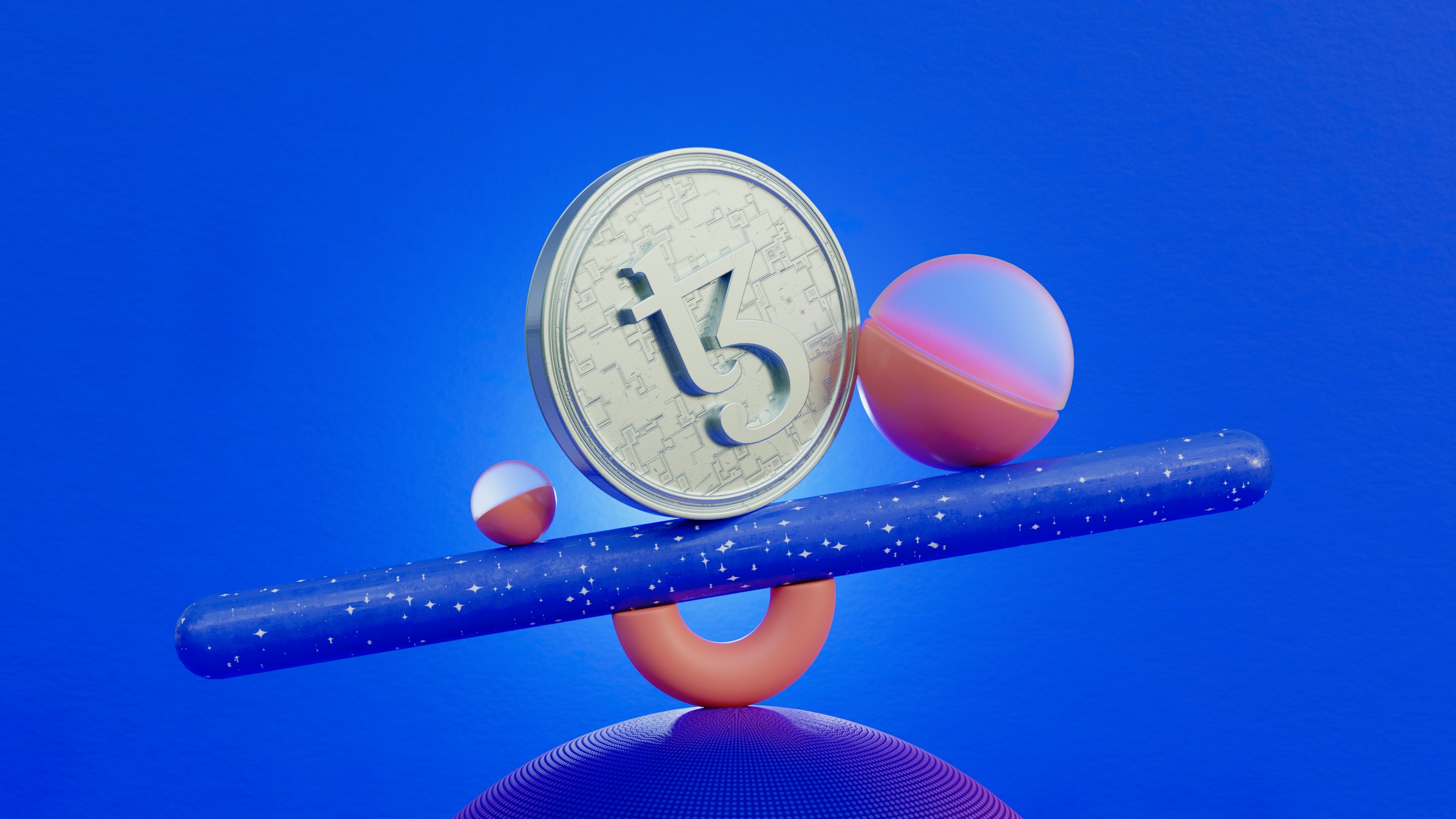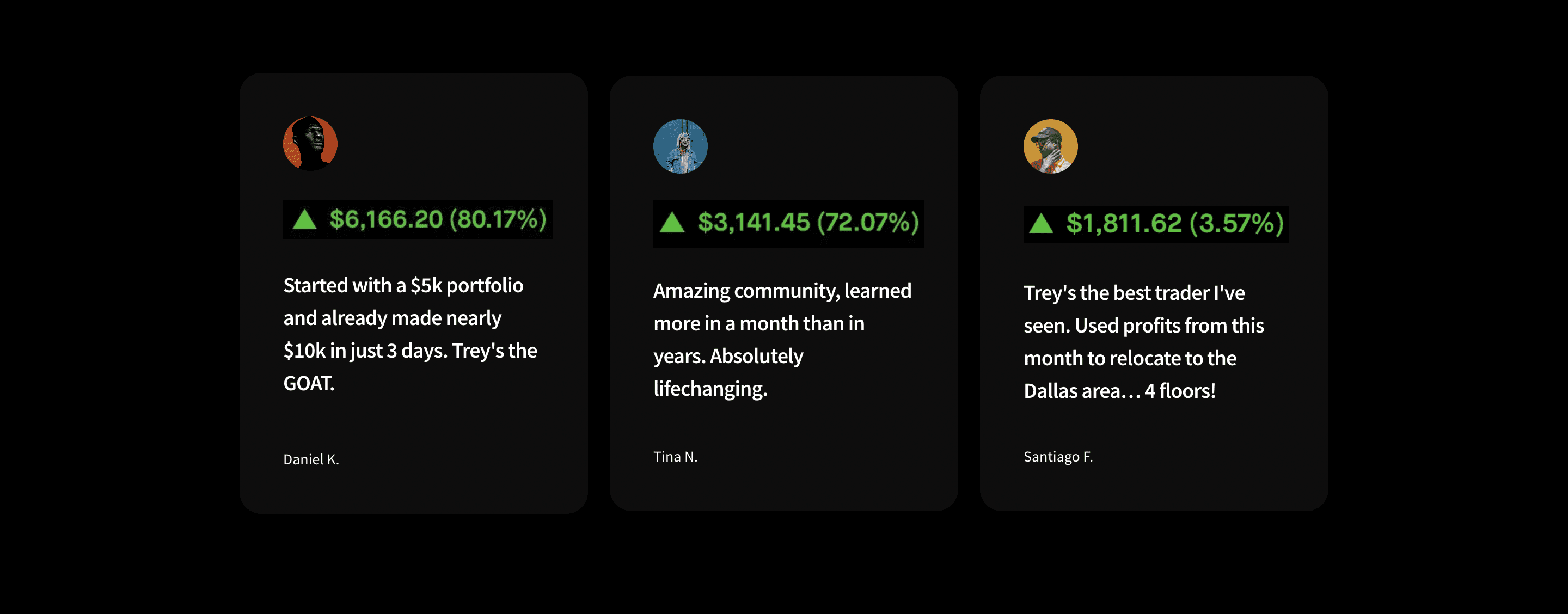11 Best Crypto Indicators for Crypto Trading and Analysis
Sep 27, 2024

Trey Munson
Crypto Signals
Understanding crypto indicators is essential for navigating the unpredictable world of crypto trading, especially when using resources like an options trading room. With the right tools, you can anticipate market trends and make informed decisions to stay ahead with crypto signals.
To sharpen your skills further, explore the options trading room on the Digital Dollars Trading platform to learn to recognize and apply these indicators effectively.
Table of Contents
What is a Crypto Indicator?

A crypto indicator is a tool that aids investors in analyzing the movement of crypto prices. These indicators provide insights into potential market directions by processing historical data and other market activity. They’re invaluable for making informed trading decisions. Crypto indicators help simplify complex data into actionable insights, enabling traders to make quick, informed choices.
Informed Decision-Making: The Potential of Insight
Crypto indicators are your shortcut to making more intelligent decisions. Instead of leaning on gut feelings or guesswork, let these tools convert complex market data into clear, actionable insights. For instance, Moving Averages can reveal trends in price movements, guiding you on when to enter or exit a trade. With indicators, you can trade with confidence.
Identifying Trends Early: Stay Ahead of the Game
Spot trends before the market does. Indicators like the MACD and RSI are like your early warning system, alerting you when a trend is taking shape or about to turn around. This early detection can mean the difference between capitalizing on a move or missing out. Get in early and watch your profits soar.
Risk Management: Keep Your Portfolio Safe
Crypto indicators are your safety net. They help you avoid risky trades by signaling when the market is overbought or oversold. Bollinger Bands, for instance, can warn you to hold off during extreme price levels. Using these signals, you can manage your risk effectively and protect your investments from unnecessary losses.
Increased Accuracy: Layer Your Analysis
Using multiple indicators together can give you a clearer picture of the market. You can trust your decisions even more when they all point in the same direction. For example, if the RSI and Moving Average show crypto is overbought, it might be time to sell. This multi-layered approach reduces errors and boosts your chances of success.
Time Efficiency: Let Indicators Do the Heavy Lifting
Time is money, and crypto indicators save you both. They automate the analysis of mountains of data, delivering results in seconds. This allows you to make timely decisions without constantly watching the markets. Tools like the EMA provide real-time insights to act quickly and confidently.
Objective Data: Keep Emotions in Check
Trading can be emotional, but indicators offer an objective perspective. They help remove biases like fear and greed, which can cloud judgment. Even if prices are tumbling, the RSI might show the market is oversold and due for a rebound. This clear, data-driven insight can prevent panic selling and keep you on the right track.
Customization and Flexibility: Tailor to Your Strategy
You can customize indicators to fit your trading style. Adjust the timeframes of a Moving Average or tweak the MACD parameters to suit your preferences. This flexibility lets you create a personalized strategy that aligns with your goals, giving you a better chance at success.
Related Reading
• How To Trade Cryptocurrency
• Crypto Trading Strategies
• Crypto Trading Signals
• How To Trade Cryptocurrency And Make Profit
• Cryptocurrency Courses
• Day Trade Crypto
• Crypto Telegram Groups
• Crypto Community
• Crypto Tips
How Do Crypto Indicators Work?

Crypto indicators begin by gathering raw market data from exchanges. This includes vital stats like opening, closing, highest and lowest prices, and traded volume over specific timeframes. Some indicators also factor in volatility to provide deeper insights. Consider Bitcoin trading at various prices throughout the day. An indicator processes this data to identify potential trends—whether prices are heading up or down.
The Mathematical Magic Behind Indicators
Once data is available, indicators apply specific mathematical formulas to interpret it. Take the Moving Average, for example. It calculates the average crypto price over a defined period, smoothing out fluctuations to reveal trends. The Relative Strength Index (RSI) compares recent gains and losses to determine if crypto is overbought or oversold, helping traders avoid buying at peaks or selling during dips.
Turning Data into Visuals and Signals
After crunching the numbers, indicators present the results visually, usually through charts or graphs. This makes it easier for traders to spot trends or anomalies. The Bollinger Bands indicator, for instance, uses three lines to show price volatility. If prices move outside these bands, it could hint at a possible market reversal. Some indicators offer clear buy or sell signals based on set thresholds. For example, an RSI crossing below 30 might indicate a crypto is oversold and poised for a rebound.
Interpreting Market Signals for Trading
Traders use these charts and signals to make informed decisions. If Bitcoin’s 50-day Moving Average crosses above its 200-day Moving Average, known as a "Golden Cross," a trader might see this as a buying opportunity. Experienced traders often combine multiple indicators for a fuller market picture, reducing risk. They might use the Moving Average, RSI, and MACD mix to gain more trade confidence.
Crypto indicators are invaluable tools that help traders understand market behavior and confidently execute trades. They provide a more calculated approach to trading rather than relying on guesswork.
Trade Like a Pro with Digital Dollars Trading

Unlock financial freedom through expert options and crypto trading guidance with Digital Dollars Trading. Our options trading room provides a premier community, mentorship program, and proven strategies to help you master profitable trading. We've helped our students to make upwards of $30,000+ in a single day through our 1-1 mentorship, exclusive workshops, and VIP events. Escape the rat race with Trey and the rest of the Digital Dollars Trading community today. Try it out today!
11 Best Crypto Indicators for Crypto Trading and Analysis

1. Digital Dollars Trading
Unlock financial freedom through expert options and crypto trading guidance with Digital Dollars Trading. We provide a premier community, mentorship program, and proven strategies to help you master profitable trading. We've helped our students to make upwards of $30,000+ in a single day through our 1-1 mentorship, exclusive workshops & VIP events, daily trading signals, live calls, and expert tips from Trey.
Escape the rat race with Trey and the rest of the Digital Dollars Trading community today. Try it out today!

2. Moving Average Convergence Divergence (MACD)
MACD is a trend-following indicator highlighting the relationship between two moving averages of a coin’s price. When these averages cross, it generates buy and sell signals, offering insights into market momentum.
3. Bollinger Bands
Bollinger Bands consist of three lines: a middle line (the simple moving average) and two outer bands (standard deviations from the middle line). Traders use Bollinger Bands to assess market volatility and identify overbought or oversold conditions.
4. Exponential Moving Average (EMA)
EMA gives more weight to recent prices, making it more responsive to new price data. This indicator is excellent for identifying trends and their strength in shorter time frames, helping traders make quick decisions.
5. Stochastic Oscillator
This momentum indicator compares a crypto’s closing price to its price range over a specific period. It helps traders identify potential reversals and assess the momentum of the current trend.
6. Volume Weighted Average Price (VWAP)
VWAP is the average price a crypto has traded throughout the day, based on volume and price. Traders commonly use it to gauge market direction and confirm trends, especially for intraday trading.
7. Fibonacci Retracement
This tool identifies potential support and resistance levels by marking areas where retracements (price corrections) are likely to occur during a trend. Traders often use Fibonacci levels to set entry or exit points.
8. Ichimoku Cloud
The Ichimoku Cloud provides multiple pieces of data in one indicator: trend direction, momentum, and support/resistance levels. Its various components help traders gain a comprehensive understanding of the market.
9. Parabolic SAR
The Parabolic Stop and Reverse (SAR) helps traders identify potential trend reversals. It places dots on a chart, indicating whether the price is trending upward or downward, and gives traders signals for entering or exiting trades.
10. Average Directional Index (ADX)
ADX measures the strength of a trend, helping traders differentiate between trending and non-trending markets. It helps confirm whether a trend is strong enough to justify entering a trade.
11. Chaikin Money Flow (CMF)
CMF measures the volume of buying and selling pressure over some time. It helps determine whether a price trend is supported by solid market sentiment or if a reversal might occur soon.
How Digital Dollars Trading Enhances Your Trading Experience

Digital Dollars Trading is more than just a community; it's your guide in navigating the complexities of crypto trading. Our expert mentors are there to show you how to make the most of crypto indicators, helping you act swiftly with our daily trading signals and live calls. Our personalized mentorship ensures you can effectively incorporate these indicators into your trading strategy, leading to better risk management and more consistent success.
Joining Digital Dollars Trading means you’re not just following the market but staying ahead of it. Our exclusive support system ensures you’re armed with the right tools at the right time. Dive into crypto trading and boost your experience by signing up today!
Related Reading
• Short Term Crypto Trading
• Crypto Technical Analysis
• Crypto Financial Advisor
• Top Crypto Influencers
• Best Crypto Trading Bot For Beginners
• Cryptocurrency Risks
• Bitcoin Trading Strategies
• Cryptocurrency Analysis
• Crypto Portfolio Allocation
• Day Trading Cryptocurrency
• Crypto Analysis Tools
• Best Crypto Discord
How to Use a Trading Indicator

Choose the Right Indicator
Selecting the right crypto indicator is the first step. Are you a trend follower? Or you're more of a contrarian trader. Different indicators serve different purposes. Moving Averages and MACD are your go-tos for spotting trends, while RSI and Stochastic Oscillators help you find overbought or oversold conditions. Ensure the indicator fits your trading style—scalping, day trading, or swing trading.
Set Up on Your Trading Platform
Trading platforms like TradingView or Binance offer built-in indicators, making starting easy. Open a chart for the crypto you want to trade, find the “Indicators” section, and apply the one you want. Customize the settings to your liking. For instance, adjust the RSI period based on your timeframe.
Analyze Indicator Signals
Now that your indicator is set watch for signals. Trend indicators like Moving Averages reveal market direction. Buy during an uptrend and sell during a downtrend. Momentum indicators like RSI show market strength and can help you time entries and exits. If the MACD crosses above the signal line, that’s bullish; a cross below is bearish.
Confirm with Other Indicators
No single indicator is perfect. Use multiple indicators to improve your predictions. Pair RSI with MACD to confirm trends or reversals. It’s a stronger case for taking action if both show bearish signals.
Set Entry and Exit Points
Use the signals to decide when to enter and exit trades. An RSI below 30 suggests a buy as it’s oversold while touching the lower Bollinger Band could indicate a buying opportunity. Stick to your strategy and avoid impulsive trading.
Monitor the Trade
After executing a trade, monitor the indicators. If the market shifts, adjust your stop-loss or take-profit levels. Stay proactive and ready to change based on new signals.
Review and Learn from Each Trade
Evaluate how the indicators performed after a trade. Did they predict the move accurately? Were there false signals? Learning from each trade helps you improve over time.
At Digital Dollars Trading, our mentors guide you in using these indicators effectively. We offer personalized strategies, helping you make informed, profitable trades. Unlock financial freedom through expert options and crypto trading guidance with us. Join our options trading room and escape the rat race with Trey and the rest of the Digital Dollars Trading community today.
Mistakes To Avoid When Using Crypto Trading Indicators

Don’t Rely on Just One Indicator
Crypto trading indicators are tools, not crystal balls. Leaning too heavily on one can lead you astray. Consider putting all your trust in the RSI, which tells you a market’s oversold but ignores crucial context from a volume or trend indicator. That's a recipe for potential missteps. Use a mix of indicators to back up your decisions. Pair a momentum indicator like RSI with a trend-following one like MACD for better clarity.
Understand the Market Environment
Crypto markets are volatile, and indicators often can’t keep up. If market conditions change rapidly, your indicator might signal a trend shift too late, leading you to act when the moment has passed. Keep your finger on the pulse of market news, sentiment, and broader trends. Indicators are guides, not gospels.
Keep It Simple with Indicators
Too many indicators at once can clutter your analysis and lead to “analysis paralysis.” If you’ve got MACD, RSI, Bollinger Bands, and a bunch more on one chart, you’re setting yourself up for confusion. Limit yourself to two or three indicators that work well together to keep your analysis sharp.
Look at Multiple Time Frames
Sticking to a one-time frame can give you a skewed view. A signal on a 5-minute chart might tell a different story from a 1-hour chart. Keeping an eye on multiple time frames helps you avoid false signals and see the bigger picture.
Always Use Stop-Losses
Trading with indicators can give a false sense of security, leading some to skip essential risk management tools like stop-loss orders. Unexpected market moves can flip the script no matter how good your setup looks. Always set stop-losses to protect yourself.
Don’t Overtrade on Indicator Signals
Some traders jump at every signal their indicators give, leading to overtrading. This can rack up transaction costs and put you at greater risk of losses. Balance indicator signals with a broader trading strategy, and don’t rush into trades based on small movements.
How Digital Dollar Trading Helps
Digital Dollars Trading can teach you how to avoid these common pitfalls. With mentorship programs and live calls, you’ll learn how to use indicators without making rookie mistakes. You'll get daily trading signals and real-time advice on balancing indicators and avoiding overtrading or wrong entries. With Trey Munson’s expert guidance, you’ll have the tools to navigate the crypto market confidently.
Learn How To Trade Profitably in The Digital Dollars Trading Discord

Digital Dollars Trading is your gateway to financial independence. With expert guidance in crypto and options trading, you can learn to make money on your terms. Our community offers mentorship, proven strategies, and exclusive events to help you master profitable trading.
Students have made more than $30,000 in a single day through our 1-1 sessions, workshops, daily crypto signals, live calls, and expert tips from Trey Munson. Free yourself from the 9-5 grind with Trey and the Digital Dollars Trading team. Try us out today!
Related Reading
• How To Day Trade Cryptocurrency
• Best Crypto Courses
• Technical Analysis Crypto
• How To Analyze Cryptocurrency
• Crypto Risk Management
• Top Crypto Traders
• Crypto Resources
Terms of Service
